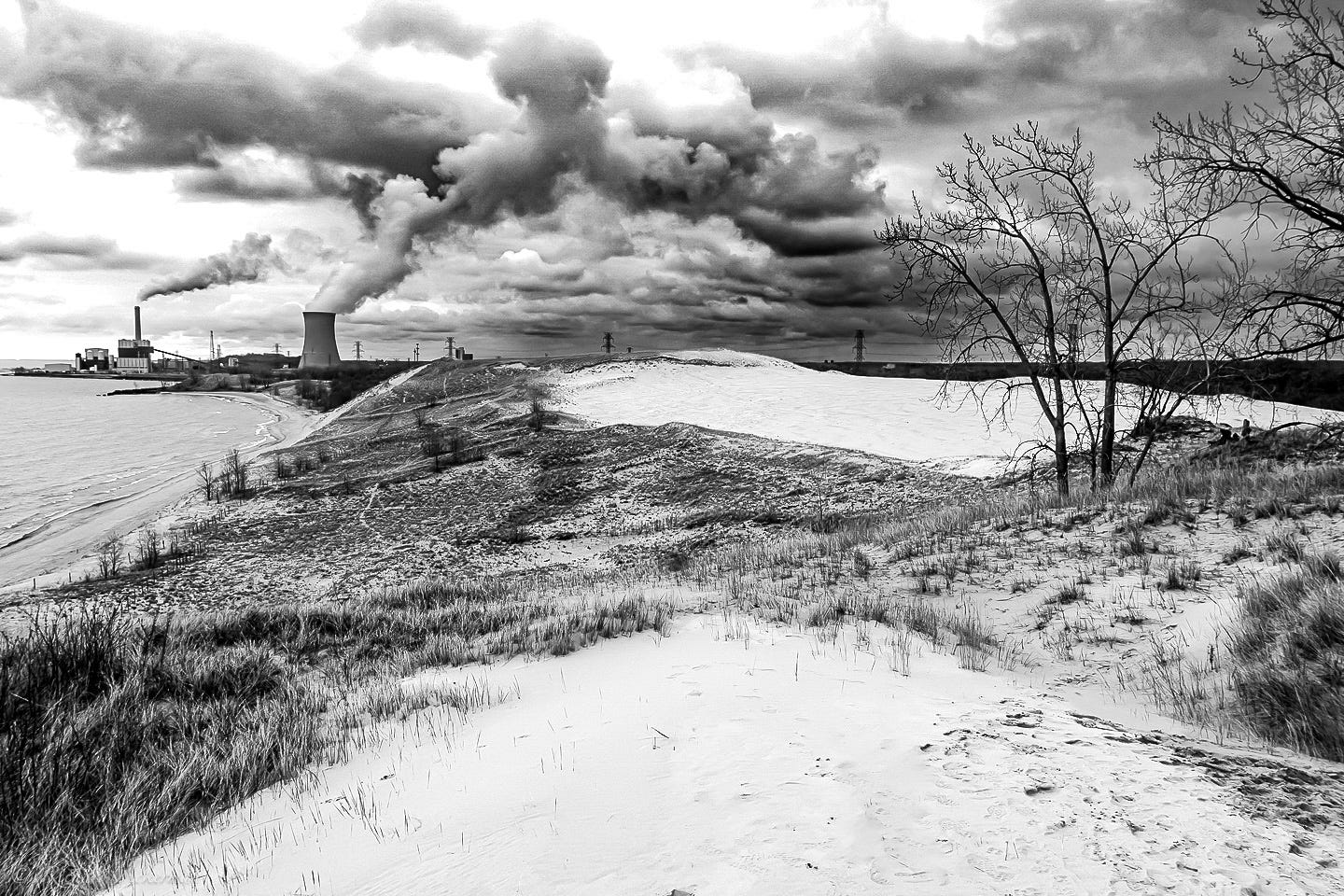Why I Refused to Erase the Smoke from My Mt. Baldy Photograph
And why Adobe would love me to take it out
We live in a moment when Adobe Lightroom, Photoshop, and even smartphones make it effortless to turn a photograph into something that never existed. One click, and an object vanishes. Another click, and something new appears.
For me, that’s a problem.
I’ve been a photorealist my entire career. When I’m in front of a subject, I compose the scene so it speaks on its own — no major alterations later, no replacing elements, no inventing details. I’ll clean up dust, correct exposure, adjust contrast. But I won’t remove a smokestack, replace a dull sky with a sunset, or erase inconvenient realities.
Why? Because I believe viewers have the right to trust what they see. They weren’t there. I was. If they visit the location, they should find what I saw — not an AI-assisted version of the truth.
Case in Point: Mt. Baldy and the Power Plant
I recently revisited a photograph from my archive — Mt. Baldy at Indiana Dunes National Park with the NIPSCO power plant in the background. The original shows smoke drifting from the cooling tower and smokestack. It’s an honest record of that day.

Then I made a duplicate and used Lightroom’s new AI tools to remove the smoke. Instantly, the plant looked dormant. The air seemed cleaner. Without context, you might think nothing was happening there.
If you’ve ever used Photoshop, you know it’s always been the place for design and manipulation — not necessarily for straightforward photograph editing. But photographers, using Adobe’s cataloging and photograph editing application Lightroom, have been asking for years to get these “Photoshop-level” powers in Lightroom without the fear and loathing of the getting past Photoshop’s learning curve.
Now, Lightroom has them. Retouching has always been part of photography. In the “analog” darkroom days, we burned, dodged, and made selective adjustments. But erasing a key element and replacing it with pixels never captured in the original is different. It’s about the relationship between photographer and viewer — and the trust that the image represents reality. Adobe’s integration of AI tools into Lightroom changed all that!
There’s another element here. Photoshop isn’t just about making photographers’ lives easier — The more accessible these tools are, the more photographers will subscribe, the more Adobe’s revenue grows, and the more it positions itself as the leader in “graphics AI” - a pretty big deal these days. These tools bring “Photoshop-level” manipulation into the hands of anyone - in the above Mt Baldy case, allowing me to removing the smoke with two clicks and a drag of the mouse possibly taking 10 seconds.
Why This Matters
But here’s the thing: I left the smoke in this photograph for a reason.
The point wasn’t to make Mt. Baldy look pristine. The point was to show how this natural landscape coexists — uneasily — with industry, with energy production, with the choices we make as a society. Thus changing the entire reality of the scene. Removing the smoke and changing the reality of the scene, would remove part of the truth.
So yes — with two clicks and a drag, I could make this scene look like it belongs on a postcard. But sometimes the job of a photograph and the photographer who made is to remind you what’s really there.
Where Do You Stand?
In the end, photographs aren’t just about beauty — they’re about honesty. Mt. Baldy, like so many places, is layered with contradictions: wild and industrial, breathtaking and flawed. By leaving the smoke in, I’m not trying to make a statement against technology or industry; I’m simply refusing to erase part of the story. The dunes are shaped by wind, water, and time — but also by the choices we make as a culture.
So I’m curious — when it comes to photography, would you rather see the world as it is, or as it could be? I’d love to hear your thoughts — hit reply or leave a comment.


Good choice to leave the steam and smoke, Rich.